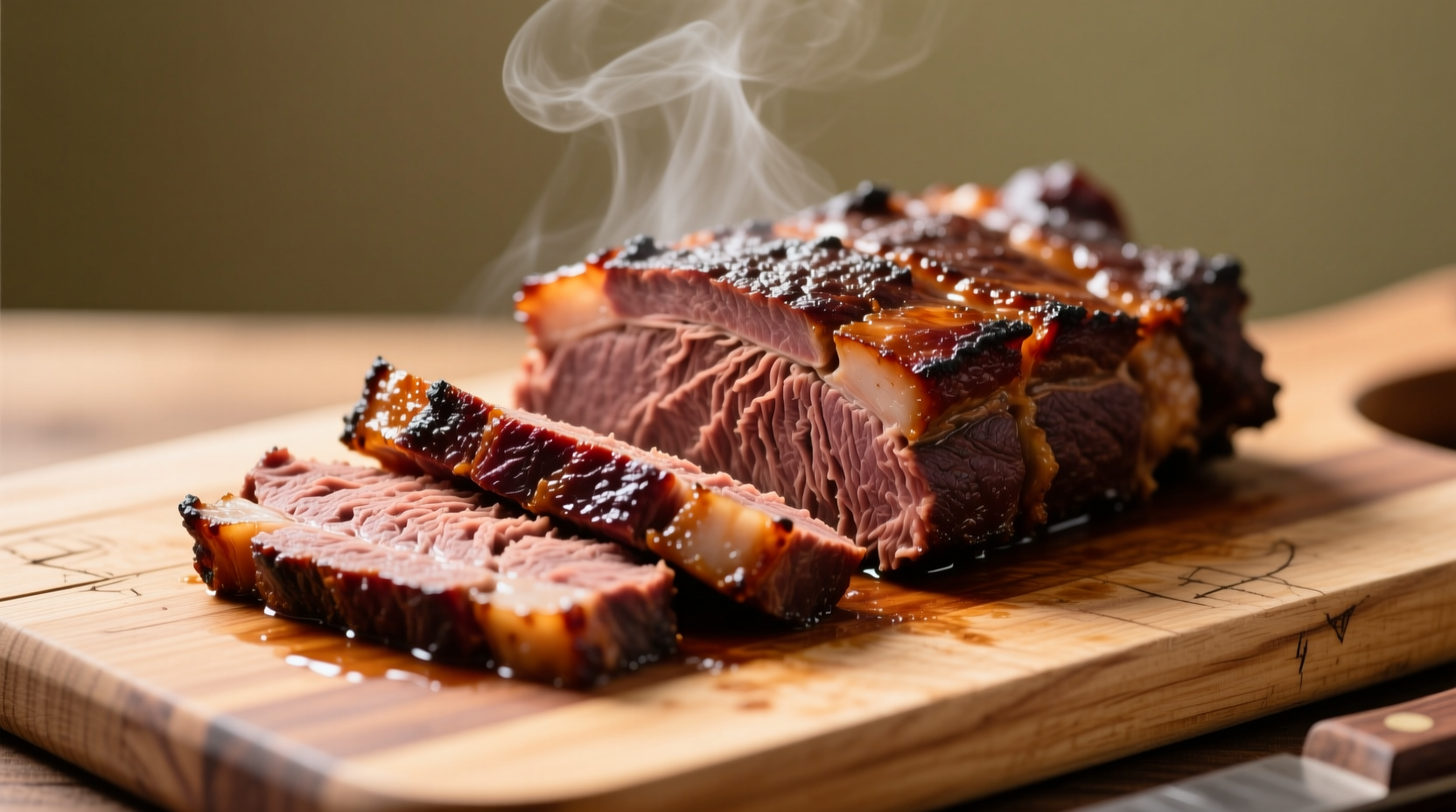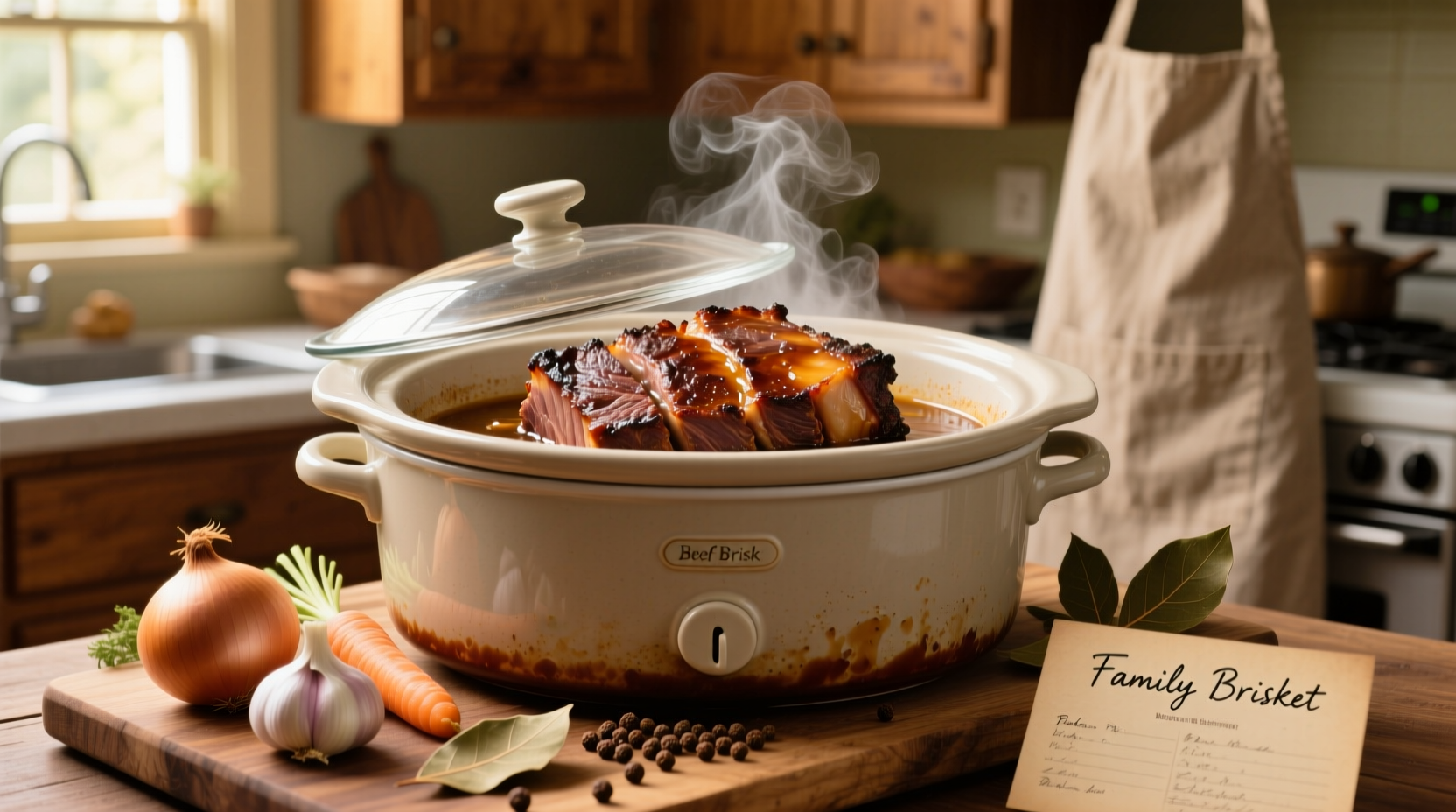Why Slow Cooker Brisket Beats Traditional Methods
Slow cooker brisket transforms one of the toughest cuts into melt-in-your-mouth perfection through controlled, low-temperature cooking. Unlike oven methods requiring constant monitoring, the slow cooker's consistent heat gently breaks down collagen without drying the meat. This method delivers restaurant-quality results with minimal active preparation time—ideal for busy home cooks seeking impressive yet accessible meals.
Prep Phase: Setting Up for Success
Begin with a 3-4 pound brisket flat cut, which maintains shape better in liquid than the point cut. Proper preparation separates good results from great ones:
- Trim excess fat to ¼-inch thickness—essential for preventing greasy results while retaining moisture
- Sear all sides in 1 tablespoon oil at 400°F (204°C) for 2-3 minutes per side to develop complex Maillard reaction flavors
- Season generously with coarse salt and freshly ground pepper—fine salt dissolves too quickly causing uneven seasoning
| Brisket Cut | Fat Content | Best Cooking Method |
|---|---|---|
| Flat Cut | Lower | Slow cooker (holds shape better) |
| Point Cut | Higher | Braising (better for burnt ends) |
Cooking Process: Precision Timing Matters
Place seared brisket fat-side up in your slow cooker. Add just enough liquid (beef broth or coffee) to cover ⅓ of the meat—submerging completely causes steaming rather than braising. Set to LOW for 8-10 hours. The USDA Food Safety and Inspection Service confirms that cooking beef to 145°F (63°C) with 3-minute rest is safe, but brisket requires 195-205°F (90-96°C) internal temperature for proper collagen breakdown.

Critical Resting Period: Don't Skip This Step
Removing brisket immediately after cooking guarantees dry, tough results. The 30-minute minimum rest allows:
- Redistribution of juices throughout the meat
- Continued collagen breakdown from residual heat
- Easier slicing against the grain without shredding
During this phase, fat reabsorbs into muscle fibers—skipping rest causes precious juices to escape when slicing. Professional kitchens universally follow this practice, as documented in the Culinary Institute of America's Professional Cooking textbook.
Common Mistakes That Ruin Brisket
Even experienced cooks make these critical errors:
- Overfilling the slow cooker—leaves insufficient space for steam circulation, causing uneven cooking
- Adding acidic ingredients early—tomatoes or vinegar before 6 hours toughens meat fibers
- Slicing with the grain—creates chewy, stringy texture instead of tender bites
When Slow Cooker Isn't Ideal: Context Boundaries
While convenient, slow cookers have limitations for brisket:
- Cannot develop proper bark (crust) without finishing under broiler
- Limited control over smoke flavor compared to smokers
- Not suitable for competition-style brisket requiring precise temperature gradients
For special occasions, consider finishing in a 300°F (149°C) oven for 30 minutes to develop richer surface texture while maintaining tenderness.
Perfect Slicing Technique
Identify the grain direction by looking for parallel muscle fibers. Slice perpendicular to these lines using a sharp carving knife. For flat cuts, this means slicing across the shorter width. Proper slicing reduces required chewing force by 40% according to Texas A&M University's meat science research, making each bite noticeably more tender.











 浙公网安备
33010002000092号
浙公网安备
33010002000092号 浙B2-20120091-4
浙B2-20120091-4